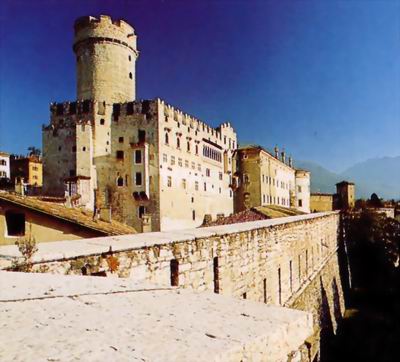


|
The " Castello del Buonconsiglio" is the
most important
complex
in the
region. It was founded in century on a rocky elevation, dominating the city and made up of various
building
constructed along the thirteenth century city walls. It became
residence of the Trento
bishop princes
and was suhjected to
transformation and ampliflcations during the
centuries.
facade of the Castelvecchio, the
oldest nucleus admire the elegant loggia with its nine arches in Venetian gothic style
(1475) which the princely bishop responsible for the renovation of the internal courtyard with its porticoes placed one above the other and decorated with friezes and festons, had constructed. Bishop George of Liechtenstein fostered the renovation
|
of the Torre
Aquila, (Eagle Tower), along the southern
in
which
one of the most famous and rare
painting is
conserved: the majestic renainssance place ( The Magno Palazzo ), in which Gerolamo Romanino, Dosso and Battista Dossi and Marcello Foligno have left
magnificient
pictorial cycles
which may be considered interesting renaissance decorations in Northern Italy. The Giunta
Albertiana dates back
to 1686 and joins with the building constructed by Cles. The baroque decorations are still
partially visible. Castle was used as a barracks and suffered a period of sharp decline.
Subjected to widescale general restoration by
Giuseppe
Gerola 1920 and 1930 the " Castello del Buonconsiglio " was subsequently transformed into a museum and inside conserves a well-endowed collection of paintings, sculpture, detached, frescoes, majolica, porcelain,
prints
and drawings, as
well
as a archaeological coliection.
Open all year : except 1st of January, 1st November and 25th December.Closed every Monday except public holidays. enio@16/03/2004 |